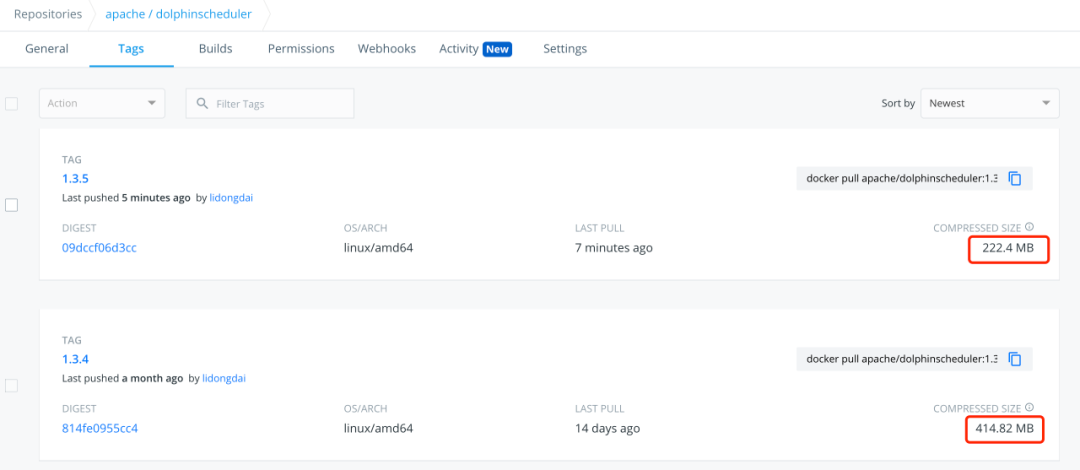I'm using sonata admin bundle to generate my backend, I'm so happy with it that I would like to use my backend to display statistics as well.
I guess I can do that by tweaking bundle's views, "standard_layout.html.twig" maybe.
Problem is, I can't find examples or even people speaking about it, so I'm wondering, is that possible ? Aren't people speaking about it because it's too simple ? Did you do it ?
I really would like to have a single backend, so pls enlighten me !
Thank you,
copndz
Yes, it`s possible. It can be done with Sonata Block or using your own controller.
If you use your controller, you can overload (one or more) actions from default CRUD controller and how the rendered result will look like depends on you.
Replace default controller SonataAdminBundle:CRUD with your controller AcmeDemoAdminBundle:ProductStatisticsAdmin in definition of your admin service and remove entity because we will try to render our statistics without CRUD operations.
<service id="acme_demo_admin.product_statistics" class="Acme\Bundle\DemoAdminBundle\Admin\ProductStatisticsAdmin">
<tag name="sonata.admin" manager_type="orm" group="statistics_group" label_catalogue="admin" label="Product Statistics" />
<argument />
<argument />
<argument>AcmeDemoAdminBundle:ProductStatisticsAdmin</argument>
</service>
Create admin service ProductStatisticsAdmin in Acme/Bundle/DemoAdminBundle/Admin/ProductStatisticsAdmin.php. The class will be very simple, because we will need only list action and no other CRUD operation.
<?php
namespace Acme\Bundle\DemoAdminBundle\Admin;
use Sonata\AdminBundle\Admin\Admin;
use Sonata\AdminBundle\Route\RouteCollection;
class ProductStatisticsAdmin extends Admin
{
protected $baseRoutePattern = 'product-statistics';
protected $baseRouteName = 'productStatistics';
protected function configureRoutes(RouteCollection $collection)
{
$collection->clearExcept(array('list'));
}
}
Create your controller ProductStatisticsAdminController in Acme/Bundle/DemoAdminBundle/Controller/ProductStatisticsAdminController.php and overload listAction() from Sonata`s CRUDController. Inside this action you can call your DB and retrieve statistics and then render them with your template.
<?php
namespace Acme\Bundle\DemoAdminBundle\Controller;
use Sonata\AdminBundle\Controller\CRUDController as Controller;
use Symfony\Component\Security\Core\Exception\AccessDeniedException;
class ProductStatisticsAdminController extends Controller
{
public function listAction()
{
if (false === $this->admin->isGranted('LIST')) {
throw new AccessDeniedException();
}
//... use any methods or services to get statistics data
$statisticsData = ...
return $this->render('AcmeDemoAdminBundle:ProductStatistics:product_statistics.html.twig', array(
'statistics_data' => $statisticsData,
));
}
}
Create template product_statistics.html.twig to generate graphs and display statistics in Acme/Bundle/DemoAdminBundle/Resources/views/ProductStatistics/product_statistics.html.twig
{% extends base_template %}
{% block javascripts %}
{{ parent() }}
{# put links to javascript libraries here if you need any #}
{% endblock %}
{% block content %}
{# put some html code to display statistics data or use some javascript library to generate cool graphs #}
{% endblock %}
Since pulzarraider explained us one way to do this I'll explain the other.
The block bundle's way allow to custom the dashboard in a pretty powerful way.
You can follow Block bundle doc at the same time
1. Create StatisticsBlockService.php in Copndz\MyBundle\Block\Service
I want to display stats by doing maths with data stored : I need to
- import the EntityManager
- add attribute $em to the service
- add constructor __construct which will call its parent constructor and set $em with EntityManager passed in argument
namespace Copndz\MyBundle\Block\Service;
use Symfony\Component\HttpFoundation\Response;
use Sonata\AdminBundle\Form\FormMapper;
use Sonata\AdminBundle\Validator\ErrorElement;
use Sonata\BlockBundle\Model\BlockInterface;
use Sonata\BlockBundle\Block\BaseBlockService;
use Doctrine\ORM\EntityManager;
class StatisticsBlockService extends BaseBlockService
{
private $em;
/**
* {@inheritdoc}
*/
public function execute(BlockInterface $block, Response $response = null)
{
$settings = array_merge($this->getDefaultSettings(), $block->getSettings());
$myentityrepository = $this->em->getRepository('CopndzMyBundle:MyEntity');
$myentity = $myentityrepository->find('5');
return $this->renderResponse('CopndzMyBundle:Block:block_statistics.html.twig', array(
'block' => $block,
'settings' => $settings,
'myentity' => $myentity,
), $response);
}
/**
* {@inheritdoc}
*/
public function validateBlock(ErrorElement $errorElement, BlockInterface $block)
{
// TODO: Implement validateBlock() method.
}
/**
* {@inheritdoc}
*/
public function buildEditForm(FormMapper $formMapper, BlockInterface $block)
{
$formMapper->add('settings', 'sonata_type_immutable_array', array(
'keys' => array(
array('content', 'textarea', array()),
)
));
}
/**
* {@inheritdoc}
*/
public function getName()
{
return 'Text (core)';
}
/**
* {@inheritdoc}
*/
public function getDefaultSettings()
{
return array(
'content' => 'Insert your custom content here',
);
}
public function __construct($name, $templating, EntityManager $entityManager)
{
parent::__construct($name, $templating);
$this->em = $entityManager;
}
}
2. Create the service in MyBundle\Ressources\config\services.yml
sonata.block.service.statistics:
class: Copndz\MyBundle\Block\Service\StatisticsBlockService
tags:
- { name: sonata.block }
arguments:
- "sonata.block.service.statistics"
- @templating
- @doctrine.orm.entity_manager
3. Add this service to sonata_block in my config.yml
sonata_block:
default_contexts: [cms]
blocks:
sonata.admin.block.admin_list:
contexts: [admin]
sonata.block.service.text:
sonata.block.service.rss:
sonata.block.service.statistics:
4. Create the template block_statistics.html.twig in Copndz\MyBundle\Ressources\views\Block
{% extends sonata_block.templates.block_base %}
{% block block %}
{{ myentity.name }}
{% endblock %}
5. And finally call the service in the admin bundle configuration in config.yml
sonata_admin:
dashboard:
blocks:
# display a dashboard block
- { position: left, type: sonata.admin.block.admin_list }
- { position: right, type: sonata.block.service.statistics }
Actually using blocks and creating separate pages are a little bit different. I think the OP is trying to create separate page inside sonata admin.
Create a controller, configure its routes in routing.yml file, set a prefix same as sonata admin's prefix if you want the URL to appear similar to sonata admin.
Render the template. There is two trick here.
First you need to extend from sonata admin's "layout" template. If you have changed it in config.yml, update the code accordingly. Ref
{% extends "SonataAdminBundle::standard_layout.html.twig" %}
Now you'll see sonata admin's menu bar and footer has come to this new page. But the menu is empty. To show the menu, you need to pass admin_pool from controller to template.
$admin_pool = $this->get('sonata.admin.pool');
return array(
'admin_pool' => $admin_pool,
// Other variables to pass to template
);
Here is another solution to your Problem: http://blog.eike.se/2014/03/custom-page-controller-in-sonata-admin.html
I believe what you're trying to acheive could be done using the Sonata Block Bundle part of Sonata Admin Bundle.
Documentation for Sonata Admin Dashboard http://sonata-project.org/bundles/admin/2-1/doc/reference/dashboard.html
I have not done it myself though.

